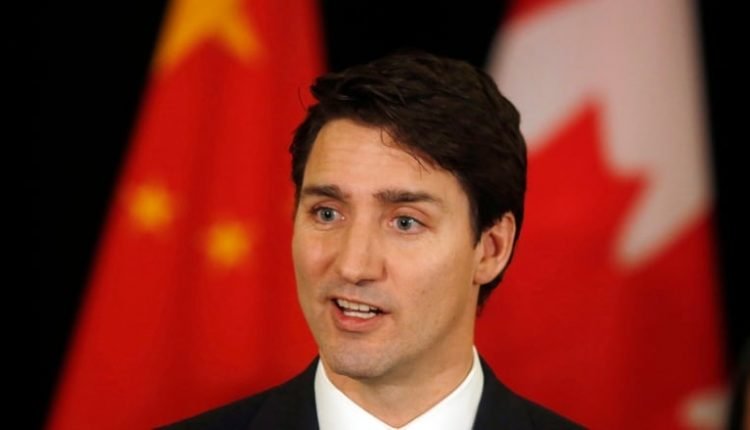Federal government posts $14B shortfall in 2018-19
J Edgar Hoover building with flagsMountie who allegedly tried to disclose secret intel was helping FBI probe
FILE – In this Feb. 26, 2015, file photo, students walk on the UCLA campus in Los Angeles. For the 12th year in a row, a record number of people have applied to the University of California as freshmen or transfer students. The university reported Monday, Jan. 11, 2016, that its nine undergraduate campuses have received 206,339 applications for the fall term, a 6.4 percent increase over last year. (AP Photo/Damian Dovarganes, File)B.C. mom charged in college admissions scandal
Justin Trudeau looking at the camera
© Provided by Canadian Press Enterprises Inc
OTTAWA — The federal government ran a $14-billion deficit in 2018-19, according to its latest annual financial report, the third year in a row with a shortfall bigger than $10 billion.
The deficit for the fiscal year that ended March 31 was $900 million smaller than the government projected in last spring’s federal budget, however.
Revenues in 2018-19 expanded by $21 billion — or 6.7 per cent — compared to the previous year, said the report released Tuesday.
The government’s revenue ratio, which is total revenues as a percentage of the size of the economy, increased last year by 15 per cent to reach its highest level since before the financial crisis in 2007-08. The growth in the ratio, which was 14.5 per cent in 2017-18, was mostly due to growth in personal and corporate income tax revenues and other taxes, the report said.
The revenue gain was partially offset by an increase of $14.6 billion — or 4.7 per cent — in program expenses and an increase of $1.4 billion — or 6.3 per cent — in public debt charges.
The 2018-19 deficit follows two straight $19-billion shortfalls, and the annual financial numbers haven’t shown a surplus since 2006-07.
Overall, the federal debt increased to $685.5 billion at the end of 2018-19. The debt-to-GDP ratio — a measure of how burdensome the national debt is — fell to 30.9 per cent from 31.3 per cent in 2017-18, the report shows.
The state of federal finances has already been the subject of political debate during the election campaign as parties argue whether the government should make an effort to balance the federal books — and how quickly.
In the three full fiscal years since the Liberals came to power, the federal government has posted $52 billion worth of shortfalls even though the economy has had a solid run of growth.
The Liberals won the 2015 election on a platform that promised annual deficits of no more than $10 billion and to return to balance by 2019.
After taking office, the Liberals abandoned the pledge and argued even larger deficit-driven investments were needed to improve Canada’s long-term economic growth. The government shifted its focus instead to reducing the net debt-to-GDP ratio each year.
The Conservatives have long attacked the Liberals for breaking their 2015 deficit pledge and for not providing a timeline to return to balanced budgets. They’ve accused the Liberals of borrowing today on the backs of future generations.
Ahead of next month’s election, the Liberals have laid out projections calling for five more years of deficits of at least $10 billion.
Conservative Leader Andrew Scheer is promising to pull Canada out of the red in about five years.
Jagmeet Singh’s NDP, which promised balanced books in each of the last several election campaigns, no longer has a timetable to balance the books. Instead, it’s focusing on lowering the debt-to-GDP each year.
Green Leader Elizabeth May has committed to returning Canada to budgetary balance in five years.
Maxime Bernier’s new People’s Party of Canada is the only political party that’s promised a quick path to balanced books — within two years.
—Follow @AndyBlatchford on Twitter
Andy Blatchford, The Canadian Press


